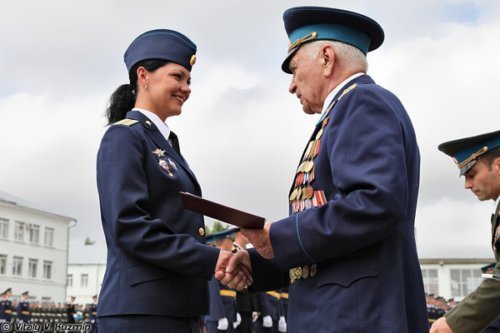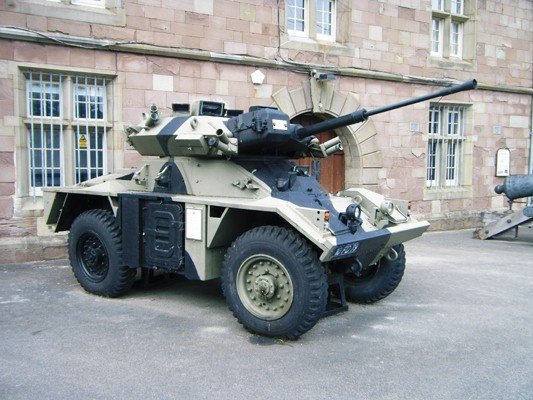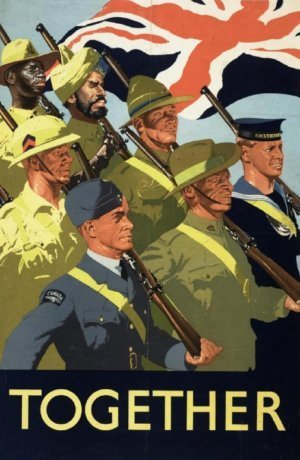Russell Phillips's Blog, page 13
January 14, 2015
British Army Reviewing its Position on Women

A woman graduating from Ryazan High Airborne Command School in Russia
(Photo by Vitaly Kuzmin, CC-BY-SA)
In December, it was announced that the British Army is to review its position on women. Currently, women are accepted into the army, but certain positions (primarily infantry and tank crew) are not open to them. It looks likely that the army will start to accept women into all roles in the next year or so.
I think this is good news. I’ve thought for some time that the Army’s position on women is an anachronism. Predictably enough, much of the commentary has pointed out that there are physical differences between men and women, that the average woman is less strong than the average man, etc. This is all true, but the average is irrelevant. Each individual applying to the army is tested. If that individual is found suitable, they’re accepted. If they aren’t found suitable, they aren’t accepted. It may well be that a smaller proportion of women will be accepted, but that’s no reason for a blanket rejection of all women.
If the British military applied the same logic everywhere, some units simply wouldn’t exist. Pass rates for SAS and SBS selection are reportedly less than 10%. This clearly shows that the vast majority of men aren’t suitable (or possibly that they didn’t like the idea of driving Pink Panthers  ). If all men were barred from joining because most of them aren’t suitable, there would be no SAS or SBS, and the military would be very much the poorer for it. So why should it matter if most women aren’t suitable for service in the infantry or armoured corps? Just as with the men, accept those that are suitable, reject those that aren’t.
). If all men were barred from joining because most of them aren’t suitable, there would be no SAS or SBS, and the military would be very much the poorer for it. So why should it matter if most women aren’t suitable for service in the infantry or armoured corps? Just as with the men, accept those that are suitable, reject those that aren’t.
It’s worth noting that Denmark has been accepting women into the infantry since 1988. Israel has allowed women to serve in any role in the IDF since 2000, and a 2007 report advised making it harder for women to get an exemption from mandatory service in the IDF. I found this quote from a Danish Lance Corporal very telling: “we don’t think about men and women. In Denmark we think professionally“.
Perhaps it’s time for the British Army to start thinking professionally.
Tweetables
British Army Reviewing its Position on Women – Click to tweet
It’s time for the British Army to start thinking professionally about women – Click to tweet
The post British Army Reviewing its Position on Women appeared first on Russell Phillips.
Related:
Nuclear Deterrence Recently, there has been debate in the UK over the...
Unearthed Unveiled On Saturday, my family and I joined 150-200 others at...
Improvements To UK Copyright Law I was pleased to discover recently that, from the 1st...
January 12, 2015
AFV Alphabet: I is for Infanterikanonvagn 91

“Ikv 91 a” by Mats Persson – Own work. Licensed under CC BY-SA 3.0 via Wikimedia Commons.
The Infanterikanonvagn 91 is a Swedish tank destroyer that entered service in 1975. Designed to be highly mobile, it is lightly armoured (only able to withstand hits from guns of up to 20mm calibre on its frontal arc), and armed with a 90mm gun and two 7.62mm machine guns. It is fully amphibious, propelled in the water by its tracks, with some production models being fitted with propellers.
The driver sits in the front left of the hull, with the other three crew members in the turret. A hatch was added to the cramped turret to expel spent shell casings. Wide tracks and a powerful engine led to excellent cross-country performance and a top speed of 65km/hour (40mph).
Production ended in 1978, with a little over 200 vehicles being produced. Later, the vehicles were improved with the addition of a laser rangefinder, a thermal sleeve for the main gun, smoke grenade dischargers. In the early 1990s, Hägglunds proposed a new version with a 105mm main gun, and a version armed with an anti-tank guided missile. Neither went into production, however.
The post AFV Alphabet: I is for Infanterikanonvagn 91 appeared first on Russell Phillips.
Related:
AFV Alphabet: F is for Fox Theoretically, there are many choices for “F”, since the British...
AFV Alphabet: G is for Gvozdika The 2S1 Gvozdika self-propelled 122mm howitzer was accepted for service...
AFV Alphabet: H is for Hornet The FV1620 Humber Hornet was an early ATGM carrier, which...
December 29, 2014
AFV Alphabet: H is for Hornet
The FV1620 Humber Hornet was an early ATGM carrier, which mounted two Malkara missiles on a Humber Pig APC. The missiles were carried on a retractable boom at the rear, which was lowered for transport, and elevated for firing. A pair of reload missiles were also carried. Developed to provide airborne forces with an anti-tank capability, it could be parachuted from a Blackburn Beverley transport aircraft.
The Malkara missile was controlled by the operator using a small joystick, with guidance commands transmitted down a wire. Like other first-generation missiles, it was difficult to control, resulting in a low hit probability. However, it had a very large warhead, and could destroy any vehicle in service at the time it was introduced. Unusually, it had a HESH (High Explosive Squash Head) warhead, rather than the more common HEAT (High Explosive Anti-Tank).
The Hornet was in service with the British army from 1958 until the 1970s, when it was replaced by the Ferret Mark 5, a variant of the Ferret armoured car fitted with Swingfire anti-tank missiles.
Photograph by Rama, Wikimedia Commons, Cc-by-sa-2.0-fr
The post AFV Alphabet: H is for Hornet appeared first on Russell Phillips.
Related:
AFV Alphabet: F is for Fox Theoretically, there are many choices for “F”, since the British...
AFV Alphabet: B is for Bishop During the western desert campaign in the early part of...
AFV Alphabet: C is for Carden Loyd tankette The term “Carden Loyd tankette” actually refers to a series...
December 15, 2014
AFV Alphabet: G is for Gvozdika
The 2S1 Gvozdika self-propelled 122mm howitzer was accepted for service with the Soviet army in 1970 and began volume production in 1971. The hull is made of welded steel, based on the automotive components and running gear of the MT-LB. The driver sits at the front with the engine behind him, and the turret and fighting compartment at the rear. Within the turret, the commander sits on the left, with the gunner below and in front of him, and the loader to the right. The gun has sights for indirect and direct fire. A rate of fire of 5-8 rounds per minute can be maintained for a protracted period. 40 rounds of ammunition are carried in the vehicle, but standard practice during a fire mission would be for ammunition to be supplied from outside.
An odd feature of the Gvozdika is that the suspension can be adjusted to make the vehicle shorter, useful when transporting the vehicle by air. The standard tracks are 400mm wide, but like the MT-LB, 670mm wide tracks can be fitted for use in snow, swampy ground, etc. The 2S1 has NBC protection, infra-red driving lights, and a small infra-red searchlight on the commander’s cupola. It is fully amphibious, propelled in the water by its tracks. Before entering the water, a bilge pump is switched on, shrouds are fitted to the hull front, water deflectors are lowered at the rear, the trim vane is erected at the front of the hull, and covers are fitted around the engine air intakes. Only 30 rounds are carried when swimming; any excess have to be removed before entering the water.
The post AFV Alphabet: G is for Gvozdika appeared first on Russell Phillips.
Related:
AFV Alphabet: A is for Antonov A-40
AFV Alphabet: F is for Fox
AFV Alphabet: B is for Bishop
December 1, 2014
AFV Alphabet: F is for Fox
Theoretically, there are many choices for “F”, since the British army gives its armoured vehicles an FV designation. The Fox armoured car, for example, is more formally known as “FV721 Fox Combat Vehicle Reconnaissance (Wheeled)”. However, choosing something like “FV4034 Challenger 2″ would have felt like cheating, so I’ve gone for the Fox. Introduced in 1973, it served with the British army for about 20 years.
It has a crew of three (commander, gunner, and driver). The commander and gunner are seated in the turret, which is armed with a 30mm RARDEN cannon and a coaxial 7.62mm machine gun. The driver sits in the centre front of the hull. The vehicle has aluminium alloy armour sufficient to protect from small arms, but not from 0.50″/12.7mm HMG fire. The Fox can swim with the aid of a flotation screen, which takes about two minutes to erect, and can be dropped by parachute.
The post AFV Alphabet: F is for Fox appeared first on Russell Phillips.
Related:
AFV Alphabet: B is for Bishop
AFV Alphabet: C is for Carden Loyd tankette
AFV Alphabet: D is for Deerhound
November 28, 2014
Discontinuing direct sales
Due to changes in EU VAT law, I need to stop selling ebooks directly from my website. The direct sales facility has therefore been removed.
I still want to offer a discount to mailing list members, but this will now be done via Wargame Vault. Details have been sent to mailing list members.
Apologies for any inconvenience.
The post Discontinuing direct sales appeared first on Russell Phillips.
November 27, 2014
Shilka Publishing’s 2014 Advent Calendar

My publishing company, Shilka Publishing, is hosting an online advent calendar. It is online now, but the windows can’t be opened until 1st December. Each day will have a different giveaway, discount code, or interesting fact. Make sure you check it every day – the giveaways and discounts will only be valid for a single day.
The post Shilka Publishing’s 2014 Advent Calendar appeared first on Russell Phillips.
Related:
Wargame Vault: wish list sale
Smashwords July Summer/Winter Sale
Remembrance Day Sale
November 17, 2014
AFV Alphabet: E is for EIFV
The EIFV is the Egyptian Infantry Fighting Vehicle, an interesting hybrid of an M113 armoured personnel carrier mated with a turret from an M2 Bradley infantry fighting vehicle. It was developed by BAE Systems for the Egyptian Ministry of Defence, with design starting in 1995, and production starting two years later.
The M113 chassis is enlarged, with an extra road wheel. The armour is improved to a point where it is proof against 14.5mm AP rounds in all aspects. A more powerful engine is fitted, to compensate for the extra weight caused by the additional armour and turret. It has a crew of three, and can carry seven infantrymen. A standard Bradley turret is fitted on top of the M113 hull, armed with a 25mm chain gun, coaxial 7.62mm machine gun, and twin launcher for TOW anti-tank missiles.
The combination of M113 hull and Bradley turret makes for a cheap and reasonably effective infantry fighting vehicle. The upgraded engine allows the vehicle to keep pace with the Egyptian army’s M1A1/M1A2 Abrams MBTs.
Image source: BAE Systems via Wikipedia (GFDL)
The post AFV Alphabet: E is for EIFV appeared first on Russell Phillips.
November 11, 2014
Britain Did Not “Stand Alone” in 1940
Lest we forget … that Britain was not alone
On Remembrance Day last year I wrote, “I consider Remembrance Day to be a time to remember everyone that has been harmed by war. Any war, any nationality, civilian, military, whatever.”I still believe that, but it occurred to me recently that there is a commonly-held belief that after the fall of France in 1940, Britain alone opposed Nazi Germany. This is a myth. I don’t know where the “Britain stood alone” idea came from, but it seems likely that it comes from Churchill’s famous “Their Finest Hour” speech. However, to his credit, Churchill recognised that there were countries other than Britain fighting Germany. He didn’t speak of Britain fighting alone, he spoke of “Britain and the British Empire”, and the “British Empire and its Commonwealth”. Even that wasn’t quite true, since countries such as Nepal and Oman, which were neither members of the Commonwealth nor parts of the Empire, had declared war against Germany in 1939.
After France surrendered in 1940, Germany was still at war with Britain. They were also at war with Canada, Australia, New Zealand, South Africa, Bahrain, Nepal, Newfoundland, Oman, and Samoa. None of these countries were covered by the British declaration of war, but had made their own distinct declarations during the first weeks of the war. More countries, including India, were covered by the British declaration of war, since they were part of the British Empire.
These countries made very real contributions to the war effort, even before the entry of other countries such as the USSR and USA. In December 1939, HMNZS Achilles, a New Zealand cruiser, was engaged in the Battle of the River Plate, which led to the sinking of the German pocket battleship Graf Spee. New Zealand pilots fought in the Battle of Britain, and an army division served in North Africa. It’s notable that the only man to win the Victoria Cross and Bar during World War II was a New Zealander. The Royal Canadian Air Force made a major contribution to the Battle of Britain, and her navy fought in the Atlantic. Two Indian infantry divisions fought in North Africa. South Africa provided many pilots during the Battle of Britain, and South Africans fought in North Africa.
When people say that “Britain stood alone” against Nazi Germany in 1940, they’re doing a great disservice to the countries, and the many thousands of men, that fought and died alongside the British. Their contribution and their sacrifice deserves to be remembered.
At 11:00, when I observe the two minute silence, I will remember them. Will you?
The post Britain Did Not “Stand Alone” in 1940 appeared first on Russell Phillips.
November 3, 2014
AFV Alphabet: D is for Deerhound

“T17-Deerhound-armored-car-2“. Licensed under Public domain via Wikimedia Commons.
The T17 (named Deerhound by the British) was an armoured car built in the US during World War II. Originally intended for service with both the British and US armies, in the end, neither army adopted it. The 250 vehicles that had been built had their armament (one 37mm gun and two machine guns) removed, and were used by the US Army Military Police Corps in the US.
The vehicle was designed by Ford in 1941 in response to a US Army Ordnance requirement for a medium armoured car. It had six wheels, all of which were driven. At the time, the British army was looking for medium and heavy armoured cars for service in North Africa. Production started in late 1942, but tests early the next year showed that the competing T17E1 design from Chevrolet was superior. Consequently, Britain decided to buy the T17E1 (which they named the Staghound), and the US army adopted the light M8 Greyhound armoured car.
The post AFV Alphabet: D is for Deerhound appeared first on Russell Phillips.








